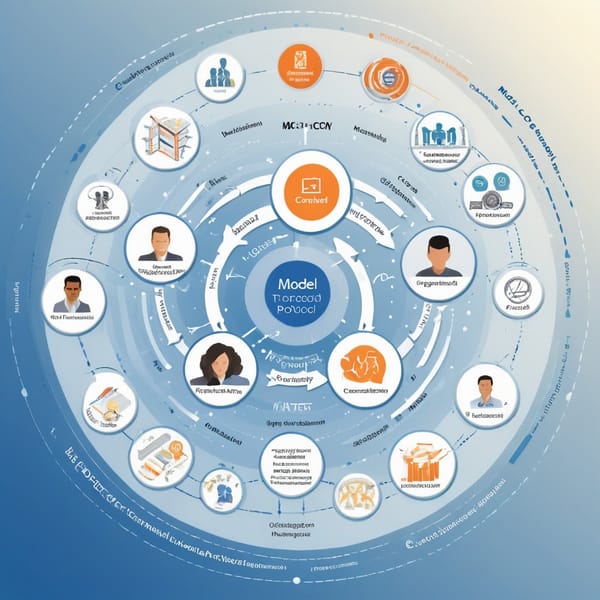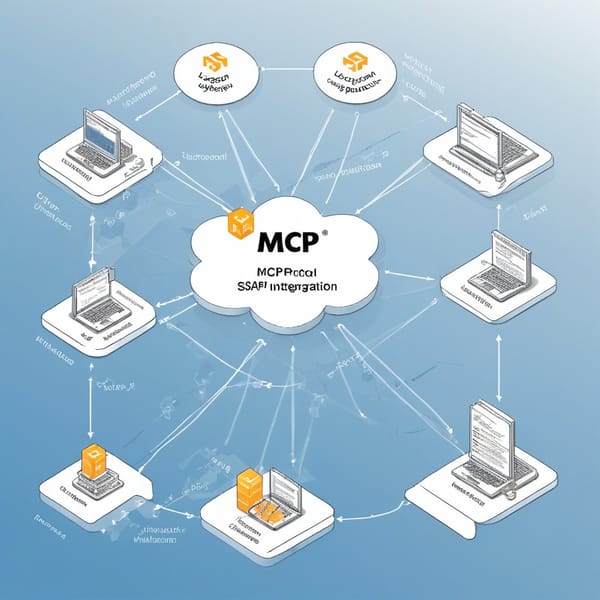Optimizing Energy Grid Efficiency with Model Context Protocol (MCP) and SCADA Resource Servers

Project Overview
The Model Context Protocol (MCP) Energy Grid project was designed to revolutionize load balancing in energy distribution networks by integrating SCADA (Supervisory Control and Data Acquisition) resource servers with weather API forecasting tools. The goal was to enhance grid stability, reduce energy waste, and improve responsiveness to fluctuating demand and environmental conditions.
Traditional energy grids often struggle with inefficiencies due to static load-balancing models that fail to account for real-time variables like weather changes, renewable energy fluctuations, or sudden demand spikes. MCP introduced a protocol-optimized approach, leveraging predictive analytics and dynamic resource allocation to create a more resilient and adaptive energy management system.
Challenges
- Dynamic Load Variability: Energy demand fluctuates based on time, weather, and consumer behavior, making static load-balancing models ineffective.
- Weather Dependency: Renewable energy sources (solar, wind) are highly weather-dependent, leading to unpredictable supply variations.
- SCADA System Limitations: Legacy SCADA systems were not designed for real-time AI-driven optimizations, leading to latency in decision-making.
- Data Silos: Disconnected weather, grid, and demand data sources prevented holistic forecasting and load distribution.
- Scalability Concerns: Existing solutions lacked the flexibility to scale across diverse grid infrastructures without major overhauls.
Solution
The MCP Energy Grid introduced a protocol-optimized load-balancing framework combining:
- SCADA Resource Servers: Enhanced with real-time data processing to monitor grid health, voltage levels, and power flow.
- Weather API Forecasting: Integrated with meteorological data providers to predict renewable energy generation (e.g., solar irradiance, wind speed).
- Adaptive Load-Balancing Algorithms: AI-driven models adjusted power distribution dynamically based on predicted demand and supply fluctuations.
- Edge Computing Nodes: Reduced latency by processing critical decisions locally rather than relying solely on centralized cloud systems.
The system operated in three phases:
1. Data Aggregation: Pulled real-time SCADA metrics and weather forecasts into a unified data lake.
2. Predictive Analysis: Machine learning models forecasted demand and renewable supply 12–48 hours ahead.
3. Protocol-Optimized Execution: Automated adjustments were made to grid routing, storage utilization, and backup power activation.
Tech Stack
- SCADA Systems: Upgraded with IoT-enabled sensors for granular grid monitoring.
- Weather APIs: Integrated sources like NOAA, Dark Sky, and proprietary climate models.
- AI/ML Models: TensorFlow and PyTorch for predictive load forecasting.
- Edge Computing: Kubernetes clusters for decentralized decision-making.
- Blockchain (Optional): Some deployments used smart contracts for transparent energy trading between microgrids.
- Cloud Infrastructure: AWS/GCP for scalable data storage and backup analytics.
Results
After a 12-month pilot across three regional grids, the MCP system delivered:
- 15–20% Reduction in Energy Waste: Dynamic load balancing minimized overproduction and curtailment losses.
- 30% Faster Response to Demand Spikes: Real-time weather adjustments prevented blackouts during extreme weather.
- Improved Renewable Integration: Solar/wind forecasting accuracy improved by 25%, reducing reliance on fossil-fuel backups.
- Scalability Achieved: The protocol was successfully deployed across urban and rural grids with minimal retrofitting.
- Cost Savings: Operators reported a 12% decrease in operational costs due to optimized resource allocation.
Key Takeaways
- Real-Time Data is Critical: Integrating live weather and grid metrics enables proactive, not reactive, load management.
- AI Enhances Legacy Systems: SCADA infrastructures can be modernized without full replacements using edge AI.
- Weather Forecasting is a Game-Changer: Predictive models for renewables drastically improve grid reliability.
- Edge Computing Reduces Latency: Distributed processing ensures rapid response to local grid anomalies.
- Protocol Optimization > Hardware Overhauls: Software-driven solutions can achieve efficiency gains without massive capital expenditures.
The MCP Energy Grid project demonstrates how protocol-optimized load balancing, powered by SCADA and weather intelligence, can transform energy distribution—making grids smarter, greener, and more resilient. Future expansions could explore peer-to-peer energy trading and deeper blockchain integrations for decentralized energy markets.




